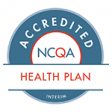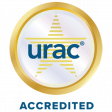
More Ways to Lower the Risk of Sudden Infant Death Syndrome (SIDS)
Along with creating a safe sleep environment, here are some other ways to lower your baby’s risk of Sudden Infant Death Syndrome (SIDS):
- Feed your baby breast milk; evidence shows that human milk reduces the risk of SIDS. The longer you give your baby breast milk, the more protection it gives.
- Breastfeed or feed your baby expressed breast milk. The American Academy of Pediatrics recommends breastfeeding as the sole source of nutrition for your baby for about six months.
- Even after you add solid foods to your baby’s diet, continue breastfeeding until they’re at least 12 months or longer if you and your baby desire.
- Try giving your baby a pacifier at nap time and bedtime. This helps reduce the risk of SIDS, even if the pacifier falls out after your baby is asleep.
More information about pacifiers
- If your baby is breastfed, wait until breastfeeding is established before offering a pacifier. That means your milk supply is good, breastfeeding is comfortable and consistent, your baby is latching well, and they’re gaining weight as they should. If you’re not breastfeeding your baby, you can start the pacifier whenever you like.
- It’s okay if your baby doesn’t want a pacifier. You can try offering one again later, but some babies simply don’t like them. If the pacifier falls out after your baby falls asleep, you don’t have to put it back in.
- Don’t hang a pacifier around your baby’s neck or attach it to their clothing when they’re sleeping.
Regular prenatal care is extremely important during pregnancy and the early months of your baby’s life, as is avoiding the use of alcohol or illicit substances.
To learn more, see “Get Regular Prenatal Care and Avoid Substance Use During Pregnancy and After Giving Birth.”






